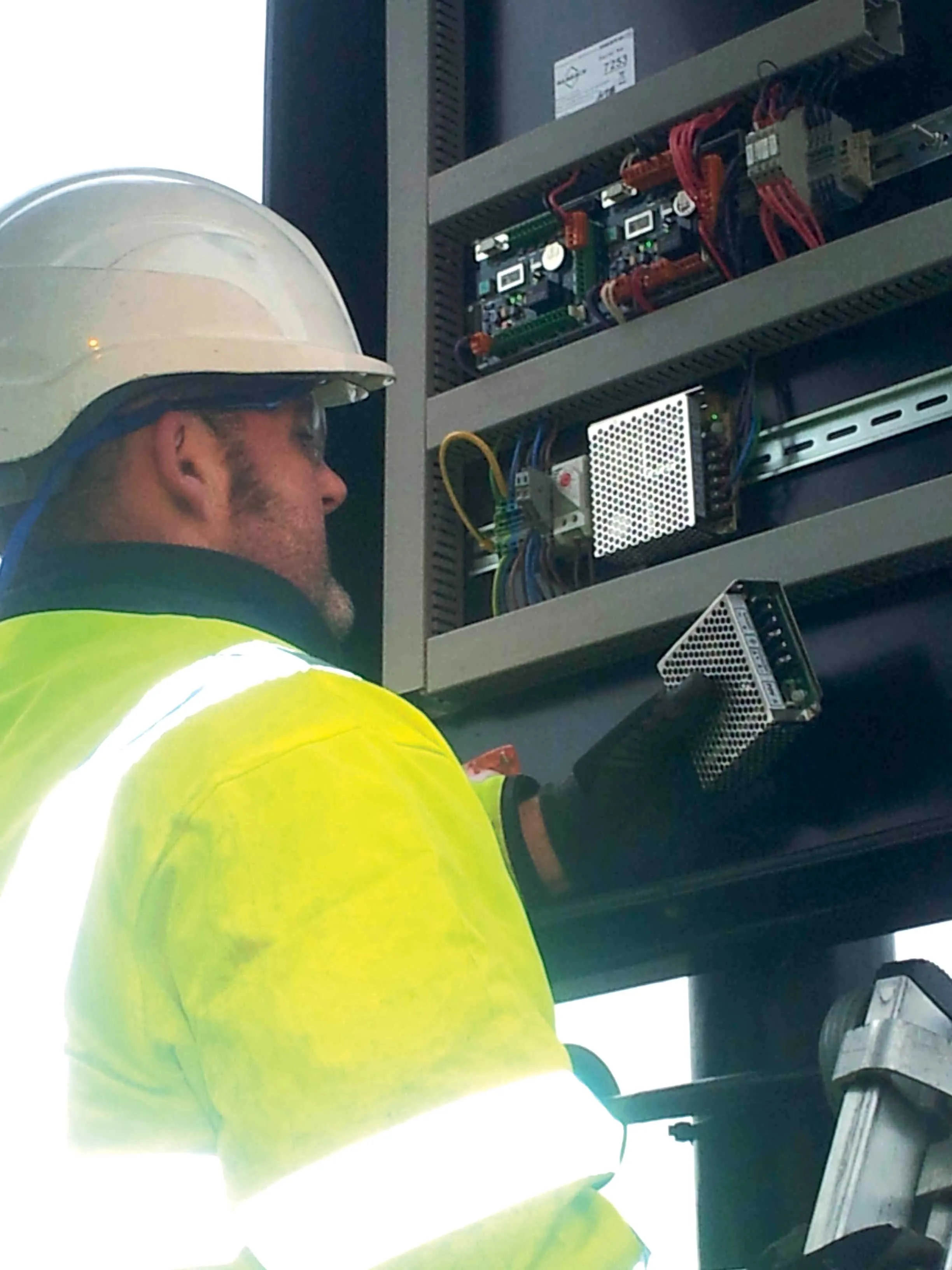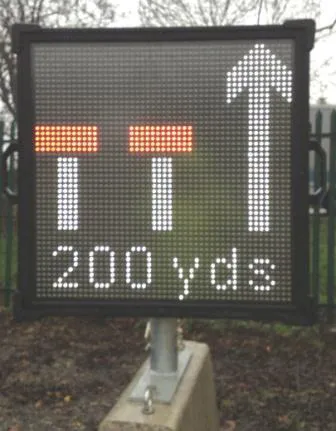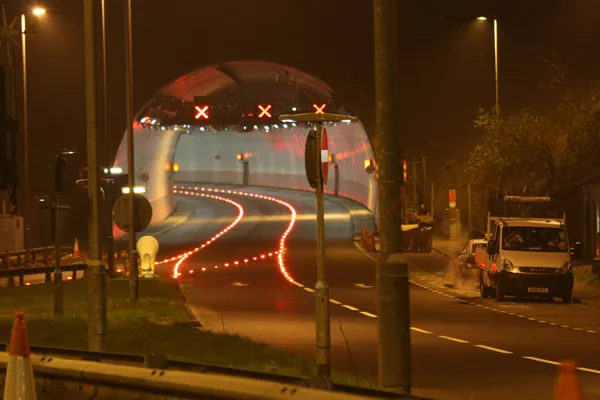Two major developments being introduced will help optimise traffic flow on routes carrying high volumes of vehicles/day. An installation of Flexicon’s flexible conduit will help keep the traffic flowing on one of the busiest sections of the M6 motorway through Birmingham by protecting power and data cabling for overhead gantries and CCTV cameras.
On behalf of Highways England, who is implementing a hard shoulder running scheme between junctions 5 and 8, contractor’s Carillion is using the 63mm diameter L
July 15, 2015
Read time: 3 mins

Key traffic innovations will help keep vehicles flowing on the UK’s busy roads
Two major developments being introduced will help optimise traffic flow on routes carrying high volumes of vehicles/day. An installation of Flexicon’s flexible conduit will help keep the traffic flowing on one of the busiest sections of the M6 motorway through Birmingham by protecting power and data cabling for overhead gantries and CCTV cameras.
On behalf of8100 Highways England, who is implementing a hard shoulder running scheme between junctions 5 and 8, contractor’s 2435 Carillion is using the 63mm diameter LPC flexible conduit for three purposes. This will run cables from ground level to the cable trough in the bridge deck on the viaduct above. From here the cables will be routed through a parapet into the gantries and CCTV cameras.
Carillion will also use the conduit to provide cross carriageway ducts from one side of the viaduct to the other, a distance of about 35 metres. These duct routes provide a continuous cable route from the existing infrastructure to new structures, so there is no need to access underneath or above the viaduct for any recabling.
Dalvier Chana, Construction Manager for Carillion said, “By having the cable routed in continuous ducts, it will allow future replacement or upgrading of cables without having to work at height over the side or underneath the viaduct.“
Reliability and long life was a key requirement for conduit since it needs to protect the cabling from UV degradation and water ingress plus potential theft or vandalism. The cable ducts need to have a lifetime of at least 15 years. The LPC conduit supplied is UV resistant and has an IP rating of IP66, IP67 and IP68.
As Flexicon is a UK manufacturer it can offer its customers tailored solutions. For this project the conduit was supplied cut to length to save the customer installation time on site.
Tim Creedon, sales and marketing director for Flexicon said, “When considering cable protection for long-term projects such as this, it is vital to consider all of the hazards faced and specify accordingly. With 52 different conduit systems to choose from, in both metallic and non-metallic options, we have a solution for almost any situation.”
Meanwhile, many early generation variable message signs (VMS) are now reaching end of life and are either failing completely or becoming extremely difficult to maintain,337 Swarco Traffic has launched a new service to repair and renovate life expired VMS.
According to Swarco, the cost of buying new is too great, making repair and renovation a novel proposition. A project is currently underway with one municipal authority to repair up to 40 signs, some of which were installed up to 20 years ago.
Jeremy Cowling, managing director of Swarco Traffic, explained that where possible, original equipment and enclosures are retained, but new electronics and LEDs fitted. “This process enables full functionality of the sign to be restored,” he said.
“The result is improved reliability; the signs become easier to maintain and spare parts are now more readily available. The performance characteristics of the new equipment are often better than when the signs were first installed and there is an opportunity to reduce power consumption.
“By offering a new service, to repair, renovate and reinstall existing equipment, we can help local authorities to address an immediate need with a cost-effective and pragmatic solution.”
Two major developments being introduced will help optimise traffic flow on routes carrying high volumes of vehicles/day. An installation of Flexicon’s flexible conduit will help keep the traffic flowing on one of the busiest sections of the M6 motorway through Birmingham by protecting power and data cabling for overhead gantries and CCTV cameras.
On behalf of
Carillion will also use the conduit to provide cross carriageway ducts from one side of the viaduct to the other, a distance of about 35 metres. These duct routes provide a continuous cable route from the existing infrastructure to new structures, so there is no need to access underneath or above the viaduct for any recabling.
Dalvier Chana, Construction Manager for Carillion said, “By having the cable routed in continuous ducts, it will allow future replacement or upgrading of cables without having to work at height over the side or underneath the viaduct.“
Reliability and long life was a key requirement for conduit since it needs to protect the cabling from UV degradation and water ingress plus potential theft or vandalism. The cable ducts need to have a lifetime of at least 15 years. The LPC conduit supplied is UV resistant and has an IP rating of IP66, IP67 and IP68.
As Flexicon is a UK manufacturer it can offer its customers tailored solutions. For this project the conduit was supplied cut to length to save the customer installation time on site.
Tim Creedon, sales and marketing director for Flexicon said, “When considering cable protection for long-term projects such as this, it is vital to consider all of the hazards faced and specify accordingly. With 52 different conduit systems to choose from, in both metallic and non-metallic options, we have a solution for almost any situation.”
Meanwhile, many early generation variable message signs (VMS) are now reaching end of life and are either failing completely or becoming extremely difficult to maintain,
According to Swarco, the cost of buying new is too great, making repair and renovation a novel proposition. A project is currently underway with one municipal authority to repair up to 40 signs, some of which were installed up to 20 years ago.
Jeremy Cowling, managing director of Swarco Traffic, explained that where possible, original equipment and enclosures are retained, but new electronics and LEDs fitted. “This process enables full functionality of the sign to be restored,” he said.
“The result is improved reliability; the signs become easier to maintain and spare parts are now more readily available. The performance characteristics of the new equipment are often better than when the signs were first installed and there is an opportunity to reduce power consumption.
“By offering a new service, to repair, renovate and reinstall existing equipment, we can help local authorities to address an immediate need with a cost-effective and pragmatic solution.”









